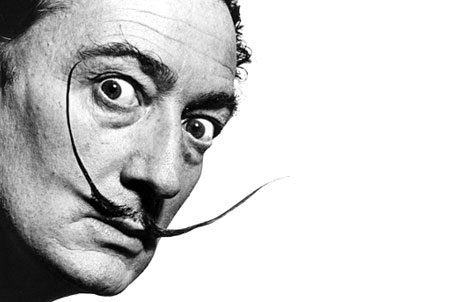Creativity and insanity are not that different according to scientists.
After many years of studying human’s mind, scientists from Karolinska Institute in Sweden found that the though pathways of creative people are quite similar to those of people with schizophrenia. Both lack some important receptors used to direct and filter thoughts. It could be this uninhibited processing that allows creative people to “think outside the box”. That could lead to mental illness in some people. But rather than a clear division, experts suspect a continuum, with some people having psychotic traits but few negative symptoms.
Many of the artists, writers and theorists, who are known for their high creativity have also had mental illnesses – Vincent van Gogh, Salvador Dali, John Nash (mathematician portrayed by Russell Crowe in the movie A Beautiful Mind) and many more. Creativity is often associated with an increased risk of depression, bipolar disorder and schizophrenia.
Well, known fact is that people who have mental illness history in their family have a higher chance of being more creative.
Professor Fredrik Ullen believes his discovery could help explain why. He looked at the brain’s dopamine receptor genes which experts believe govern divergent thought. He found that highly creative people who did well on tests of divergent thought had a lower than expected density of D2 receptors in the thalamus – same as people with schizophrenia. The thalamus serves as a relay centre, filtering information before it reaches areas of the cortex, which is responsible, among other things, for cognition and reasoning.
“Fewer D2 receptors in the thalamus probably means a lower degree of signal filtering, and thus a higher flow of information from the thalamus,” says Professor Ullen.
He believes that barrage of uncensored information is what ignites the creativity. This would explain how highly creative people manage to see unusual connections in problem-solving situations that other people miss.
Schizophrenics share this same ability to make novel associations. But in schizophrenia, it results in bizarre and disturbing thoughts. UK psychologist and member of the British Psychological Society Mark Millard said the overlap with mental illness might explain the motivation and determination creative people share.
“Creativity is uncomfortable. It is their dissatisfaction with the present that drives them on to make changes. Creative people, like those with psychotic illnesses, tend to see the world differently to most. It’s like looking at a shattered mirror. They see the world in a fractured way. There is no sense of conventional limitations and you can see this in their work. Take Salvador Dali, for example. He certainly saw the world differently and behaved in a way that some people perceived as very odd.”
Some companies have secure, secret laboratories for their highly creative staff where they can freely experiment without disrupting the daily business.
Chartered psychologist Gary Fitzgibbon says an ability to “suspend disbelief” is one way of looking at creativity.
“When you suspend disbelief you are prepared to believe anything and this opens up the scope for seeing more possibilities. Creativity is certainly about not being constrained by rules or accepting the restrictions that society places on us. Of course the more people break the rules, the more likely they are to be perceived as ‘mentally ill’.
He works as an executive coach helping people to be more creative in their problem solving behavior and thinking styles.
“The result is typically a significant rise in their well being, so as opposed to creativity being associated with mental illness it becomes associated with good mental health.”


